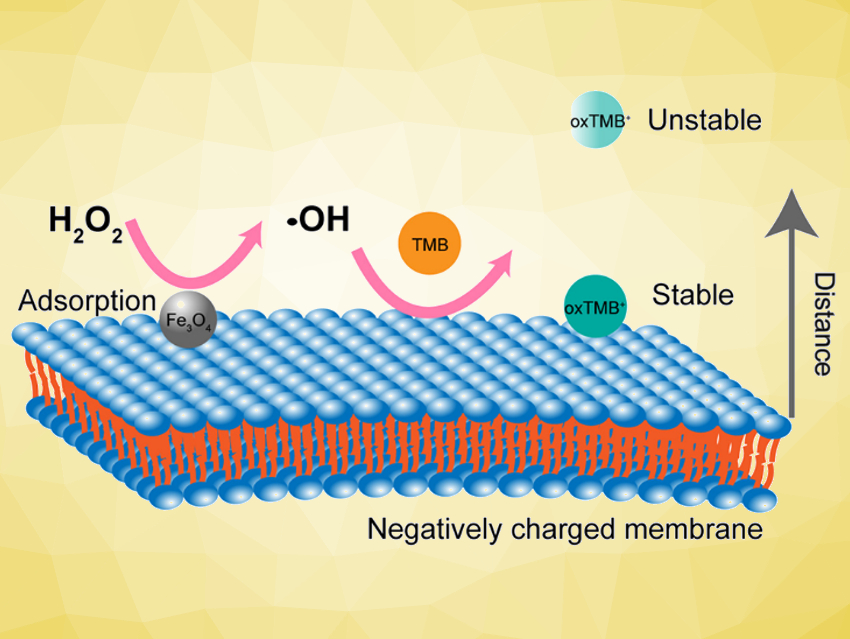Nanozymes are nanomaterials with enzyme-like characteristics. They are useful due to their high stability and cost-effectiveness and have applications, e.g., in the analytical, environmental, and biomedical fields. Peroxidase‐mimicking nanozymes such as Fe3O4 nanoparticles, for example, are promising substitutes for natural enzymes like horseradish peroxidase. However, most of these nanozymes only work efficiently in acidic conditions.
Juewen Liu, University of Waterloo, Canada, Jianbo Liu, Hunan University, Changsha, China, and colleagues have used negatively charged liposomes to allow the use of peroxidase‐mimicking nanozymes for the oxidation of 3,3′,5,5′‐tetramethylbenzidine (TMB) in neutral and even alkaline conditions. The team found that negatively charged 1,2-dioleoyl-sn-glycero-3-phospho-L-serine (DOPS) liposomes boost the activity in neutral and alkali conditions, while zwitterionic and cationic liposomes fail to show a promoting effect. The Fe3O4 nanoparticles adsorb to the surface of DOPS liposomes without compromising the membrane integrity (pictured).
According to the researchers, the enhanced activity is mainly due to the stabilization of the oxidation product oxTMB+ by the DOPS liposomes. This work shows that liposomes can be used for the regulation of nanozyme activity and provides a method to design activity-enhanced nanozymes that function over a broad pH range.
- Liposome‐Boosted Peroxidase‐Mimicking Nanozymes Breaking the pH Limit,
Qiaoshu Chen, Yibo Liu, Jianbo Liu, Juewen Liu,
Chem. Eur. J. 2020.
https://doi.org/10.1002/chem.202004133




